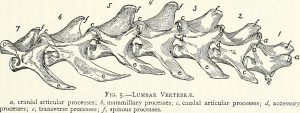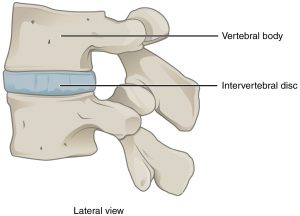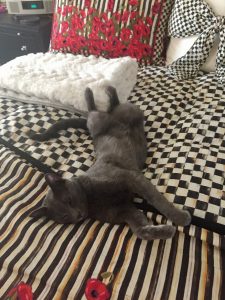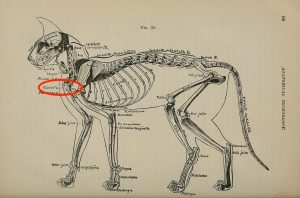By Zoe Terwilliger
Have you ever seen a cat perform some crazy maneuvers or sit in a weird position and wondered, “How do they do that”? Why cats do some of the things they do will always be a mystery to us, but the secret to a cats’ flexibility is all in their anatomy.
Like all mammals, cats have vertebrae. Vertebrae are the small bones that, together, form the spinal column. Vertebrae are characterized by where in the body they are found. The cervical vertebrae, for example, make up the portion of the spine in the neck. The thoracic vertebrae are in the upper chest cavity and connect the ribcage. Lumbar and sacral vertebrae are in the lower region of the torso and pubic area. Lastly, there are caudal vertebrae which are found in organisms with tails. As stated previously, the caudal vertebrae make up the bony structure of the tail which works as a magnificent counterbalance for the cats’ body. The ability of the tail to work as a counterbalance can be seen when cats walk on structures with fine balance – you will notice the tail will move opposite to the cats’ head. Cats’ tails have also been well studied for their role in communication in-and-between species. Besides the tails’ use as mood indicators, a cat’s’ tail also aids in quick fierce movements when playing or chasing prey.

Side view of two vertebrae with the cushioning, intervertebral disc between them. Image source.
Another important feature of vertebrae is what is in between them. Lying in between each bony vertebrae connection is an intervertebral disc. The intervertebral discs serve as a cushion between the bones of the spine and aid in shock absorption. The’ intervertebral discs of a cat contain extra elastic cushioning compared to those found in humans, and it’s this extra cushioning that supports their contortionist activities. Their extra-spongy discs also allow for greater extension in their running strides.
The combined characteristics of cat spines enable them to rotate more than almost any other animal. Not only is this great to achieve the best positions for lazing all day on the couch, but it allows cats to be exceptional predators. Their rotation ability contributes to the agility that cats have when chasing prey. This ability is also part of how cats can quickly turn and land on their feet when falling.
Another feature of cat anatomy that makes them incredibly flexible is their clavicles (collarbones). Unlike humans, who have long clavicles that attach to the sternum and scapula (breastbone and shoulder blade, respectively), the feline clavicle is free-floating. This free-floating clavicle is only attached through the cats’ musculature. Like their clavicles, a cats’ scapula’s (shoulder blades) are also free-floating and only attached via muscle. These adaptations allow cats to squeeze into exceptionally tight spaces that they otherwise would not be able to. These free-floating bones also aid in their running abilities. The lack of boney attachment enables cats to better extend their stride, allowing them to maximize their reach.
 Most interesting about all of this information is that it is only a small piece of what makes cats’ so unique and specialized. Cats have distinctive noses, mouths, ears, ear hair, etc. that makes them so well adapted to what they do – when they are not snoozing the day away, of course. While we are all devastated and amazed to learn of the anatomical differences that separate us from being as flexible as cats, we can still stare at them in awe when they perform their stunts.
Most interesting about all of this information is that it is only a small piece of what makes cats’ so unique and specialized. Cats have distinctive noses, mouths, ears, ear hair, etc. that makes them so well adapted to what they do – when they are not snoozing the day away, of course. While we are all devastated and amazed to learn of the anatomical differences that separate us from being as flexible as cats, we can still stare at them in awe when they perform their stunts.

